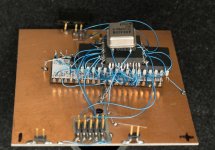MykeLawson
Experienced Member
- Joined
- Mar 21, 2014
- Messages
- 396
The other day I got to thinking; modern computers have a network boot capability but I imagine that you could get a 1Gig ethernet interface working on a retro CP/M machine. But, what if you replaced the ethernet interface with a serial interface..... You have a boot ROM, that relocated code to an area of memory CP/M would not use for booting. Then the ROM gets mask out of the 64K memory and the ROM starts to download the CP/M files from a serial port as if it were a disk. Once completed, it jumps to CP/M and you are up and running. Heck, you could have as many CP/M machines working that was as you have serial ports on the server to support it. All the server would need to do is can it's serial ports waiting for any requests. Or am I out past left field in this idea. Heck, it wouldn't be the first one I've had.

